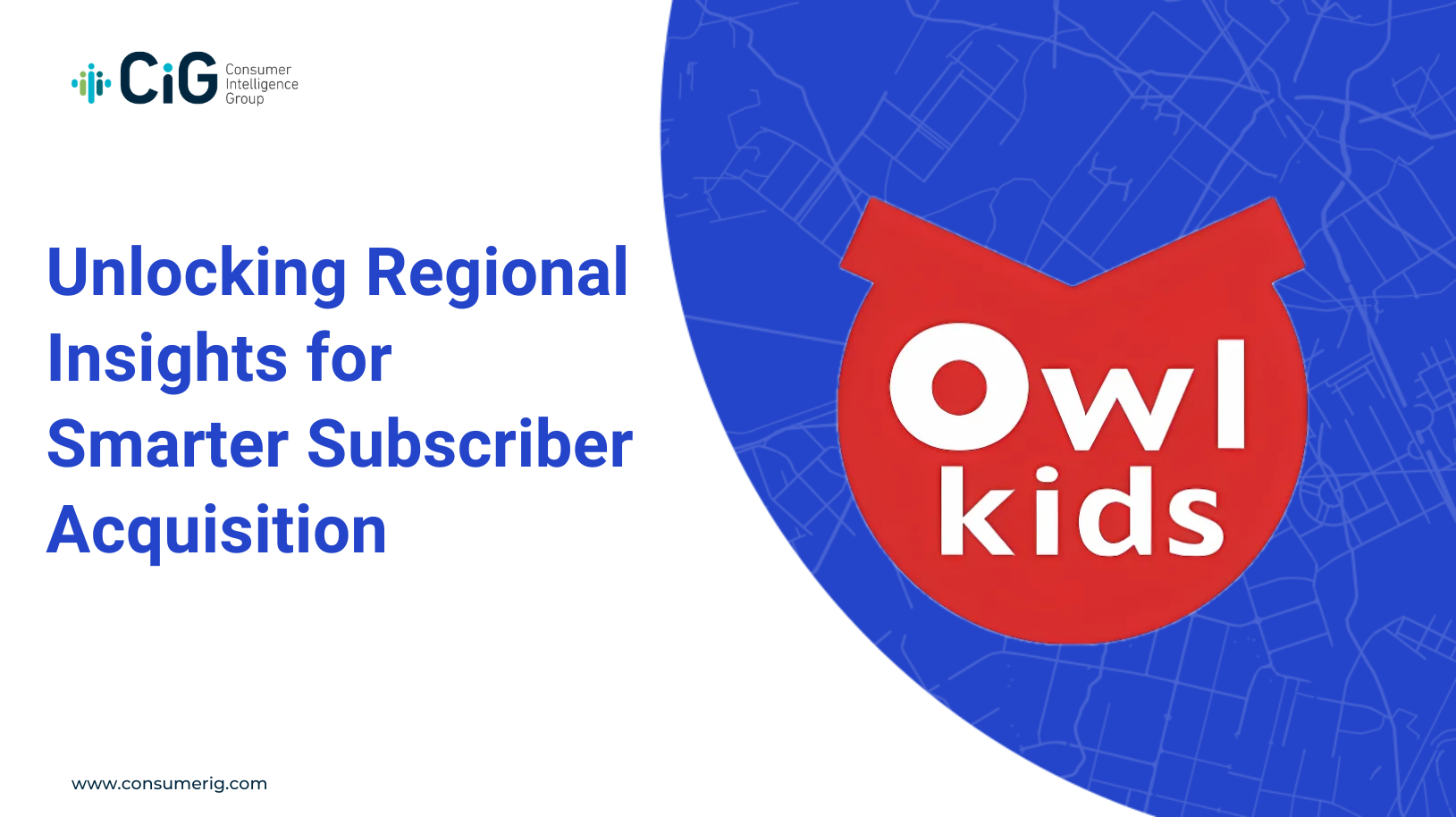“We’ve doubled our digital ad spend, but our customer acquisition costs keep rising.”
Sound familiar? You’re not alone.
Across Canada, marketers are finding that digital-only campaigns are becoming increasingly expensive and less effective for acquiring new customers. The media landscape has fragmented, consumer attention is scattered, and the promise of efficient digital targeting is eroding as privacy regulations tighten.
However, despite digital’s decreasing performance, many marketers are still neglecting one of the most reliable and effective customer acquisition channels available: direct mail.
Direct mail marketing, often dismissed as outdated or expensive, is experiencing a renaissance in 2025, delivering impressive results for brands willing to invest in it.
Let’s explore why direct mail deserves a place in your omnichannel marketing strategy in 2025 and beyond and how you can leverage it to find and convert your next best customers.
Is Direct Mail Marketing Effective? The Truth Is in The Numbers.
In a marketing landscape dominated by digital, many Canadian marketers have forgotten what makes direct mail so powerful: people actually engage with it. While you might wonder if direct mail is still relevant in 2025, Canadian consumer behaviour tells a compelling story.
Below are statistics directly from Canada Post’s “Essential Guide to Direct Mail” about how Canadians interact with their mail:
- ⅗ of Canadians review every piece of direct mail they receive to determine if it is relevant to them.
- 54% of Canadians take special notice of direct mail from businesses that are near their homes.
- 66% of Canadians see direct mail as a way to improve relationships with the businesses they shop from.
- Canadians spend an average of 9 minutes reading through mail.
- 60% of Canadians display direct mail materials in their homes.
- 88% of Canadians are prompted to visit a store by direct mail.
- 51% of Canadians have been prompted by direct mail to make a purchase.

These statistics reveal something critical about direct mail’s effectiveness: it’s not just seen—it’s engaged with, valued, and acted upon. Unlike digital ads that are scrolled past in milliseconds, direct mail commands attention and drives action.
Beyond engagement stats, there is also data to support direct mail marketing’s tangible impact on business outcomes:
- The average ROI of direct mail is $13 for every $1 spent (Canada Post’s “Direct Mail: Measuring the Impact” report)
- The average direct mail response rate is said to be between 2 and 4% (Post Grid)
What Makes Direct Mail Marketing Effective?
Direct mail connects with recipients in a fundamentally different way than digital marketing. Here’s why direct mail continues to perform exceptionally well in 2025:
Direct Mail is Tactile
Neuroscience research shows that physical materials engage more emotional processing in the brain than digital materials. Direct mail’s tangible nature creates a stronger emotional response and better memory encoding. Recipients can touch, feel, and interact with your brand message in a way that’s not possible with digital advertising.
Direct Mail Captures the Recipient’s Full Attention
Unlike digital channels, where users are constantly multitasking and distracted, direct mail is typically consumed in a moment of relative focus. There are no competing ads, no notifications, and no scrolling past your message. This focused attention translates to better comprehension and recall of your offer.
Direct Mail Has Less Competition
While your digital ads compete with countless others in overcrowded channels, your direct mail piece might be one of only a handful that a recipient reviews that day. This reduced competition for attention translates to higher engagement rates and better campaign performance.
Direct Mail Has More Longevity
Digital ads disappear in seconds, but direct mail often stays in a household for days or weeks. A compelling mail piece might remain on a kitchen counter or refrigerator, creating multiple exposure opportunities and extending your campaign’s effective lifespan.
Direct Mail Appeals to Multiple Demographics
Direct mail is generally accepted as a trustworthy advertising channel across demographic segments. While digital channels often struggle to effectively reach older generations, direct mail provides an entryway to reaching and engaging this demographic. At the same time, Canada Post has found that Millennials and Gen Z have embraced direct mail as a trusted source, as they are bombarded with digital messages on a daily basis.
Should I Abandon Digital and Invest Everything in Direct Mail?
Absolutely not. The most effective marketing strategies in 2025 take an audience-first, omnichannel approach.
The problem with many current marketing strategies isn’t digital itself—it’s the siloed, channel-specific execution that prevents brands from reaching the same high-value audiences consistently across touchpoints.
Rather than pitting channels against each other, forward-thinking marketers are asking a different question: “How can I identify my best prospects and reach them effectively across all relevant channels, including direct mail?”
This is where an audience-first approach becomes crucial. By identifying your ideal customers first and then activating those audiences across channels, including digital and direct mail, you create a cohesive experience that maximizes impact and efficiency.
How to Make Direct Mail Marketing Even More Effective
While direct mail is already powerful, how can marketers enhance its performance even further in 2025? The answer lies in precision targeting, integration with digital channels, and leveraging advanced data to inform every aspect of your campaigns.
1. Start with precise audience targeting
The days of blanket mailings are over. Modern direct mail requires the same level of audience precision as digital marketing. Using a platform like intelligentVIEW allows marketers to identify high-value prospects at the household level using over 30,000 consumer attributes covering demographics, shopping behaviours, brand preferences, and media consumption habits.
This precision means you can mail exactly the right households within a postal code, dramatically reducing waste and improving campaign ROI.
2. Create an integrated omnichannel experience
The power of direct mail multiplies when integrated with digital touchpoints. Using the household as a persistent, privacy-compliant identifier connected to all media channels, marketers can:
- Send targeted digital ads to the same households receiving direct mail
- Create sequential messaging that builds across channels
- Reinforce direct mail offers through social media and display advertising
- Retarget direct mail recipients who visit your website
This omnichannel coordination ensures your message reaches prospects consistently across multiple touchpoints, significantly improving response rates.
3. Personalize content based on audience insights
Generic direct mail pieces rarely deliver exceptional results. Today’s consumers respond best to personalization, and with the right data, you can deliver it at scale:
- Tailor offers based on household demographics and preferences
- Adjust creative elements to match segment preferences
- Customize messaging to address specific pain points or interests
Case Study: Papa John’s Canada
A perfect example of this approach comes from Papa John’s Canada. With 40 locations in British Columbia, their marketing team had been using a generalized demographic profile that assumed their core customers were primarily lower-income young families.
After implementing intelligentVIEW, they discovered their actual customer base was far more diverse than they’d assumed, including significant numbers of empty nesters, seniors (with one location having 43% of customers over age 75), young couples, and singles.
With these insights, they transformed their direct mail strategy:
- Customized imagery and portion combinations for different audience segments
- Location and segment-specific offers based on household composition
- Timed mailings around moment-in-time events relevant to each segment (like Back to School or the Super Bowl)
The personalization paid off with a 6% increase in comparable store sales.
4. Measure and optimize across channels
The most effective direct mail campaigns incorporate robust measurement and continuous optimization:
- Use unique QR codes, personalized URLs, or promo codes to track response
- Implement call tracking to capture phone responses
- Compare performance across different audience segments
- Analyze the impact of direct mail on digital channel performance
- Continuously refine audience targeting based on response data
By taking this data-driven approach, marketers can continuously improve direct mail performance and make more informed decisions about audience targeting and channel integration.
Transform Your Acquisition Strategy with Audience-First Direct Mail
The future of effective customer acquisition isn’t about choosing between digital and direct mail—it’s about creating a seamless, audience-first strategy that leverages the strengths of both. By targeting the exact same high-value prospects across all channels, you create a cohesive brand experience that maximizes impact and efficiency.
This is exactly why intelligentVIEW was created: to help Canadian marketers find and convert their next best customers through true omnichannel activation. As Canada’s only audience prospecting platform, intelligentVIEW gives you the power to:
- Identify your ideal prospects with precision using 30,000+ consumer attributes and 94 dynamic Canadian market segments
- Target the exact same households across digital, social, direct mail, and traditional media
- Eliminate wasted spend by focusing only on high-propensity prospects
- Create personalized, relevant experiences based on deep audience insights
- Future-proof your targeting strategy with privacy-compliant, household-level identification
While other solutions offer pieces of the puzzle, only intelligentVIEW brings everything together in one connected platform—data, segmentation, targeting, and omnichannel activation.
In a marketing landscape drowning in complexity, intelligentVIEW simplifies data-driven marketing and puts the focus back where it belongs: on finding and engaging your most valuable prospects, wherever they are.
Ready to see what insights are possible with audience-first marketing on intelligentVIEW? Request a free sample Insights Report today and discover exactly what data you can access about your target audiences, giving you a clear picture of how intelligentVIEW can transform your omnichannel strategy.






